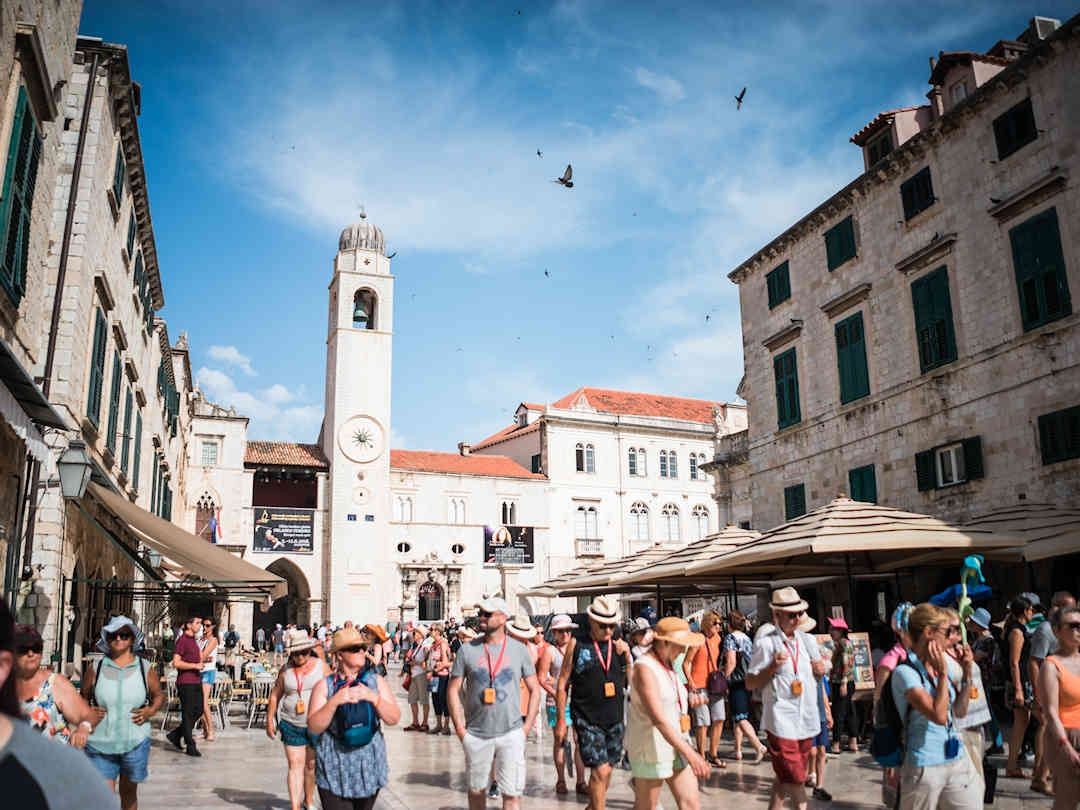We were in two minds whether we should visit Dubrovnik or not. Our curiosity and professional ethos won in the end: we want to experience the things we write about first-hand. And promoting sustainable travel also entails visiting destinations that suffer from too much love. After all, we can’t stop people from visiting popular destinations. We can only help them make conscious decisions that alleviate some of the pressure on those destinations.
In today’s article, we share a few simple tips on what you (the visitor) can do to limit your contribution to over-tourism in Dubrovnik and have a more authentic and immersive experience at the same time.
Sign up to receive our email newsletter full of actionable tips and practical advice every month
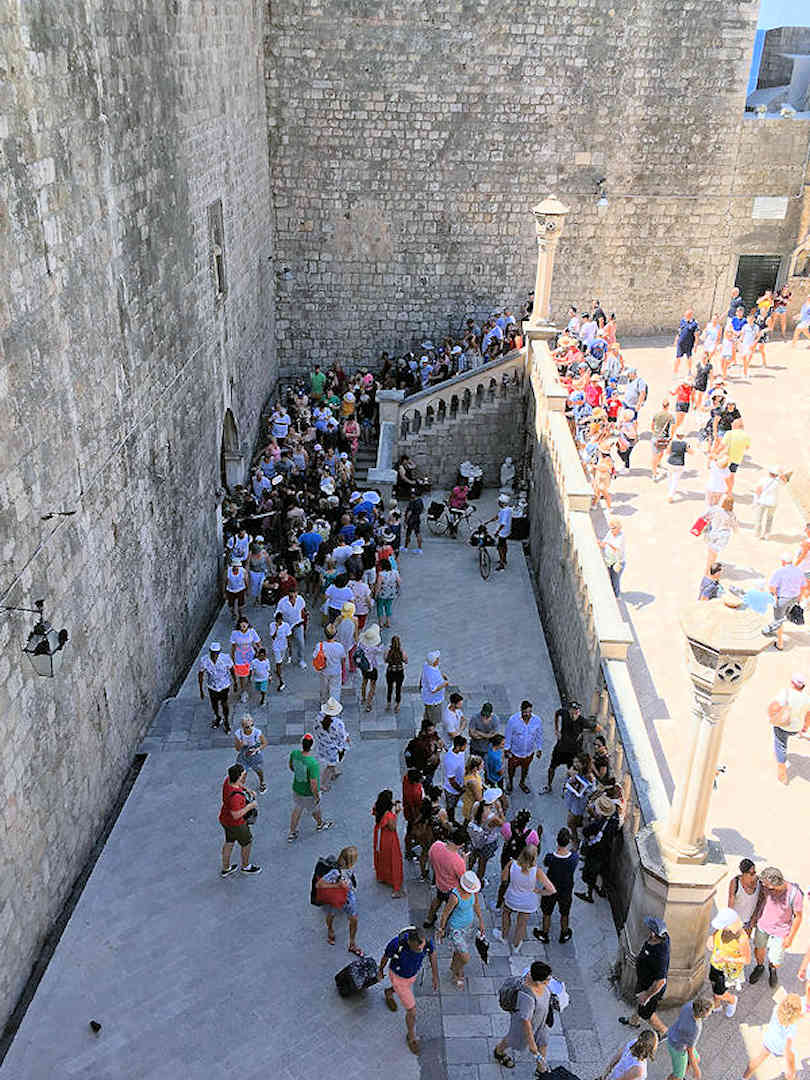
Over-tourism is a very real problem in the Old Town of Dubrovnik
Why do (so many) people visit Dubrovnik?
Dubrovnik is home to a well-preserved Old Town, built between the 7th and 17th centuries. It is surrounded by a relatively intact, 2-kilometre-long city wall. Deservedly, the Old Town of Dubrovnik was included in the UNESCO list of World Heritage Sites as early as 1979.
Dubrovnik’s Old Town is a popular filming location – the most famous ones being Game of Thrones and Star Wars VIII: The Last Jedi.
It is also very easy to get here: The city has an international airport (Official website, Google Maps location, IATA: DBV) and a seaport that can accommodate large cruise ships.
Add to that the sunny Mediterranean climate, the balmy waters of the Adriatic and countless offshore islands, and you’ve found yourself the perfect holiday spot. Only if it was that perfect.
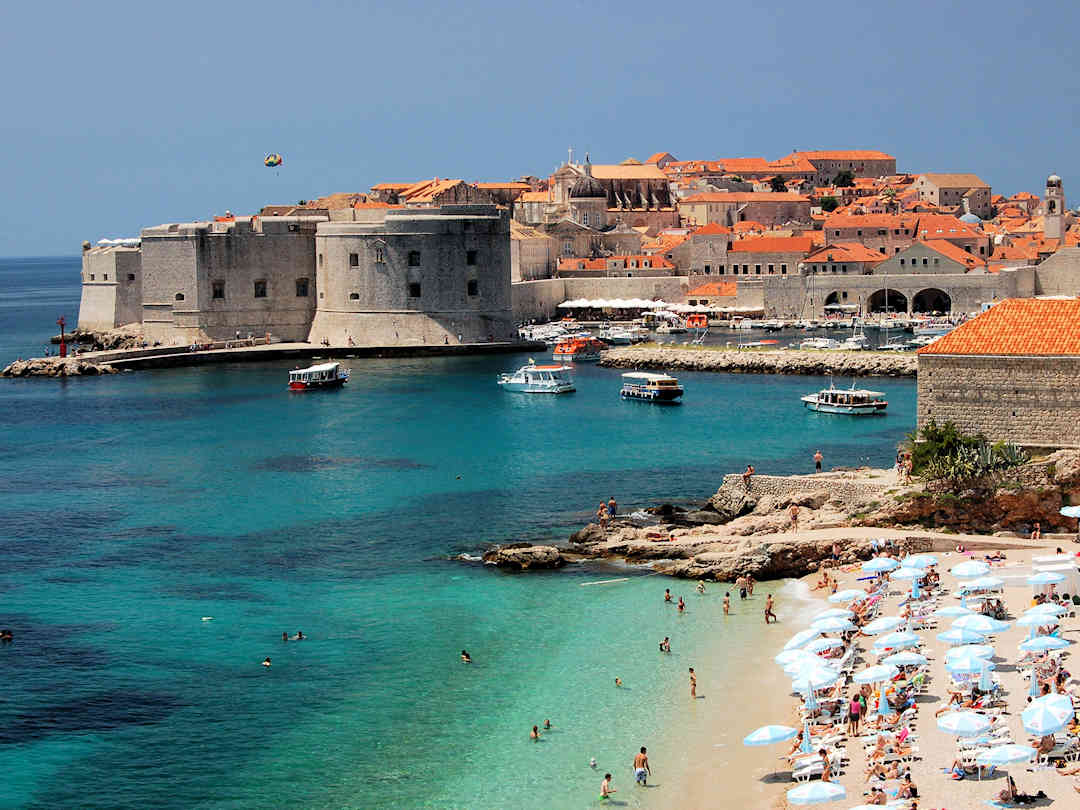
A well-preserved Old Town, a famous movie setting, balmy waters and easy access - no wonder Dubrovnik is popular
What’s the problem and how can we help Dubrovnik?
After the Croatian War of Independence, Dubrovnik was desperate for tourists to return. For decades, tourism was allowed to develop freely. The result?
Well, let me give you an example: In 2013, Dubrovnik’s worst year in terms of over-tourism, the Old Town was visited by more than 1.1 million cruise ship tourists alone. While things are improving, thanks to stricter tourism management and the recent Pandemic, 526,000 cruise ship passengers arrived in Dubrovnik in 2023. Considering there are only around 1,500 locals left within Dubrovnik’s city walls, tourists outnumber locals here by about 800 to one.
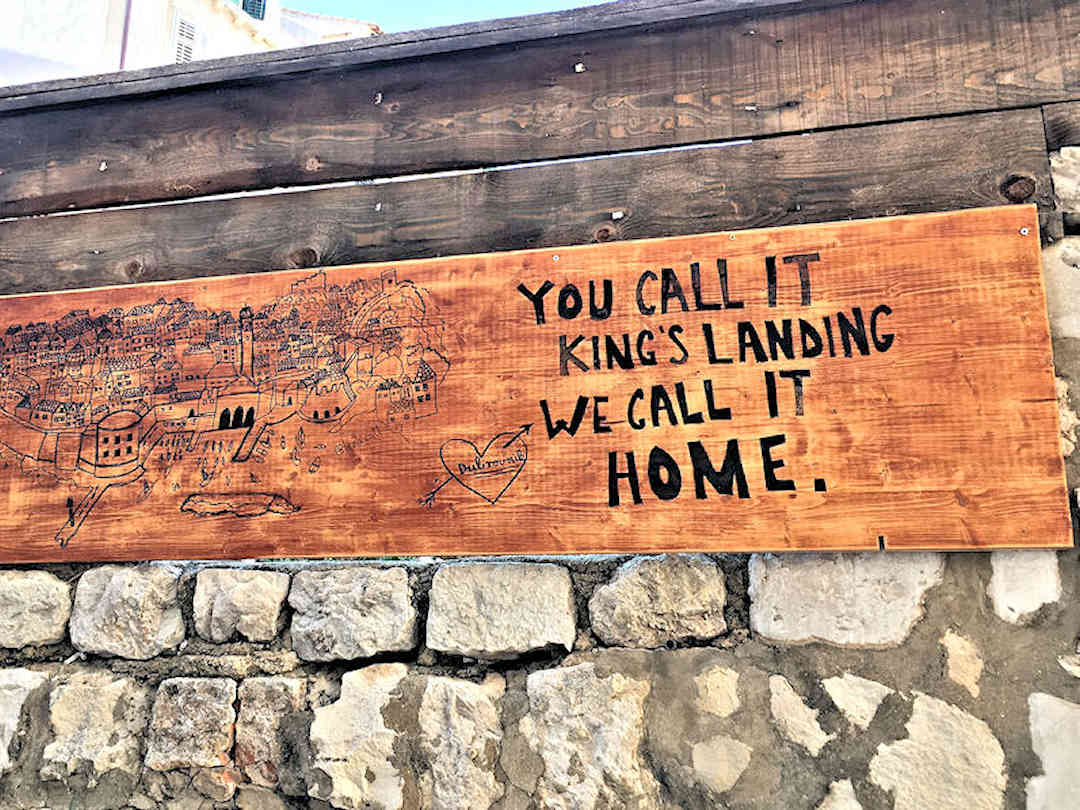
You may call it King's Landing - the locals call it home
That an influx of tourists of this scale has negative impacts can’t be debated: Made-in-China souvenir shops have replaced centuries-old family-owned businesses. Quaint checkered-cloth restaurants have become tourist traps, serving the same overpriced fare as the one next door. Medieval cobble-stoned streets, polished by millions of shoes every year, become super slippery when it rains.
Dubrovnik hasn’t lost its charm, thankfully. It’s still there, but you need to go off the beaten tourist path and search for it in the side streets, up the stairs where the remaining locals still try to live a normal life as much as possible.
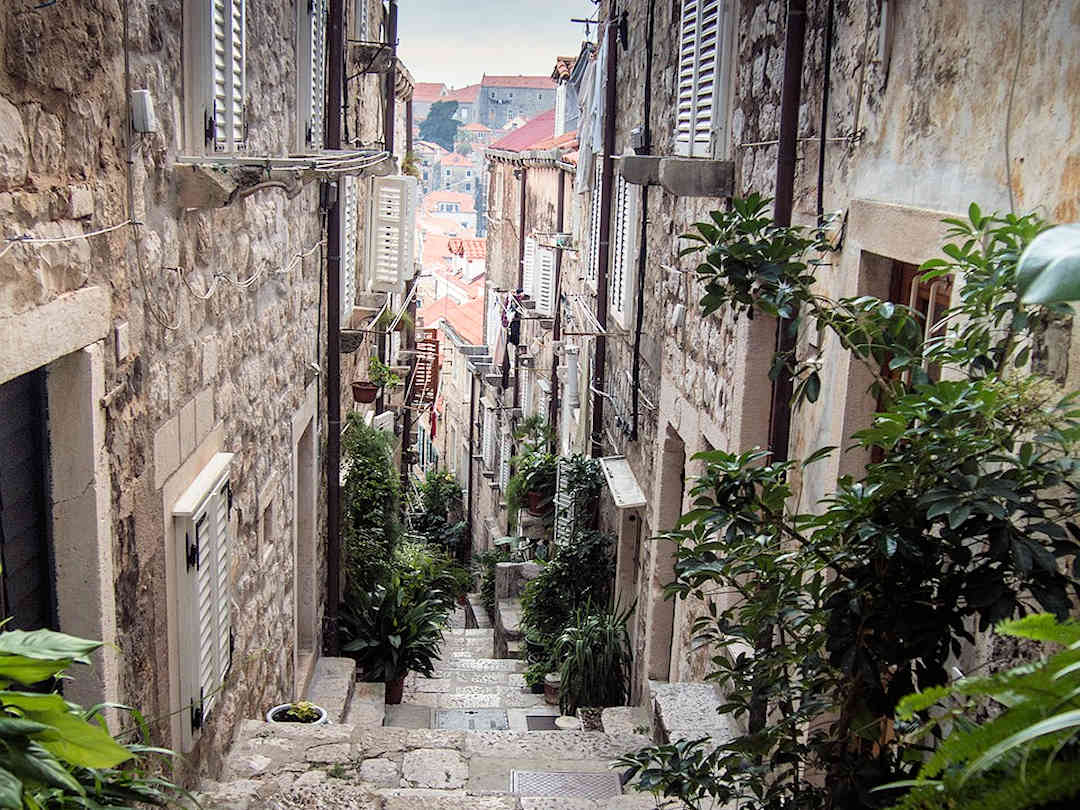
Away from the crowds, the few locals are left to live a normal life | Photo by MzPhotos on Pixabay
So, how can you as a visitor avoid contributing to the problem of over-tourism in Dubrovnik?
#1 – Time your visit
If you can, avoid the main tourist season – July and August. Period. Prices skyrocket as half of Europe seems to flock to the beaches along the Adriatic coast.

It pays to visit Dubrovnik in the off-season
Before you book your flights, check the cruise ship schedule for the Port of Dubrovnik and ideally book your stay on days when there is only one or no cruise ship in town.
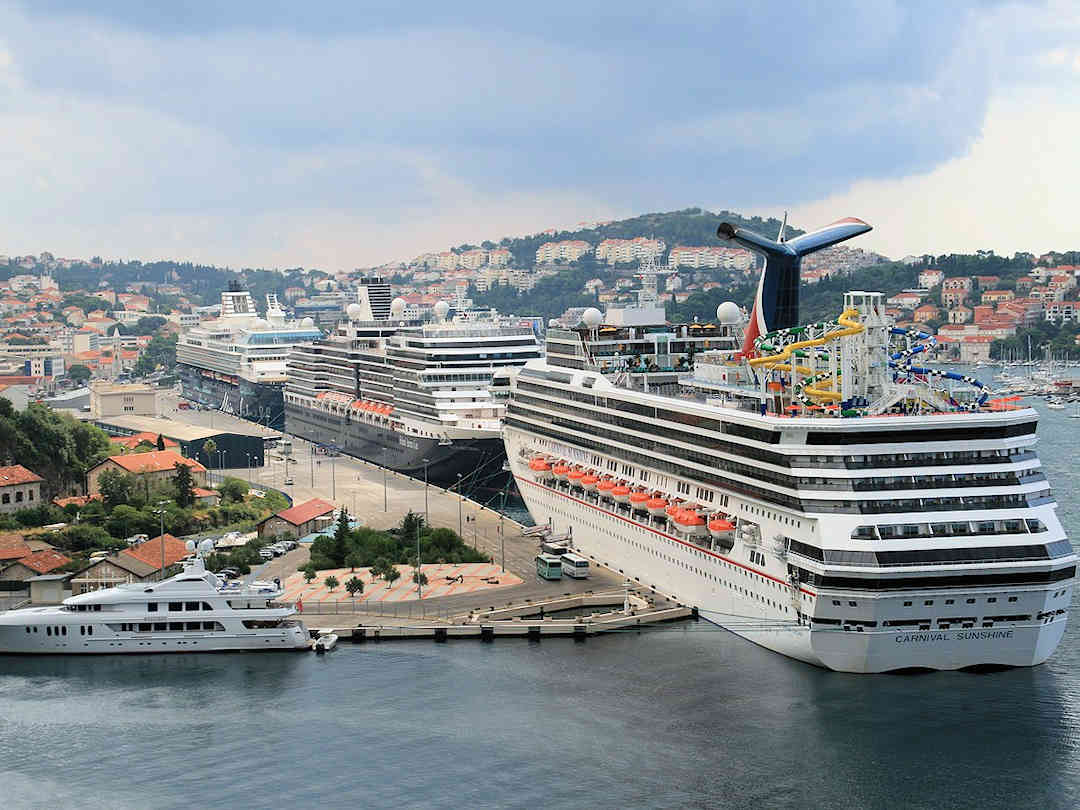
Avoid coming to Dubrovnik on days when cruise ships visit (if you can) | Photo by Dragan Tomić on Pixabay
Once there, visit the Old Town early in the morning or later in the afternoon/evening. That’s when you can catch a glimpse of the old Dubrovnik as day visitors have not arrived yet/have left already.
If in doubt check the city’s crowd monitoring system.
Can you afford to visit Dubrovnik?
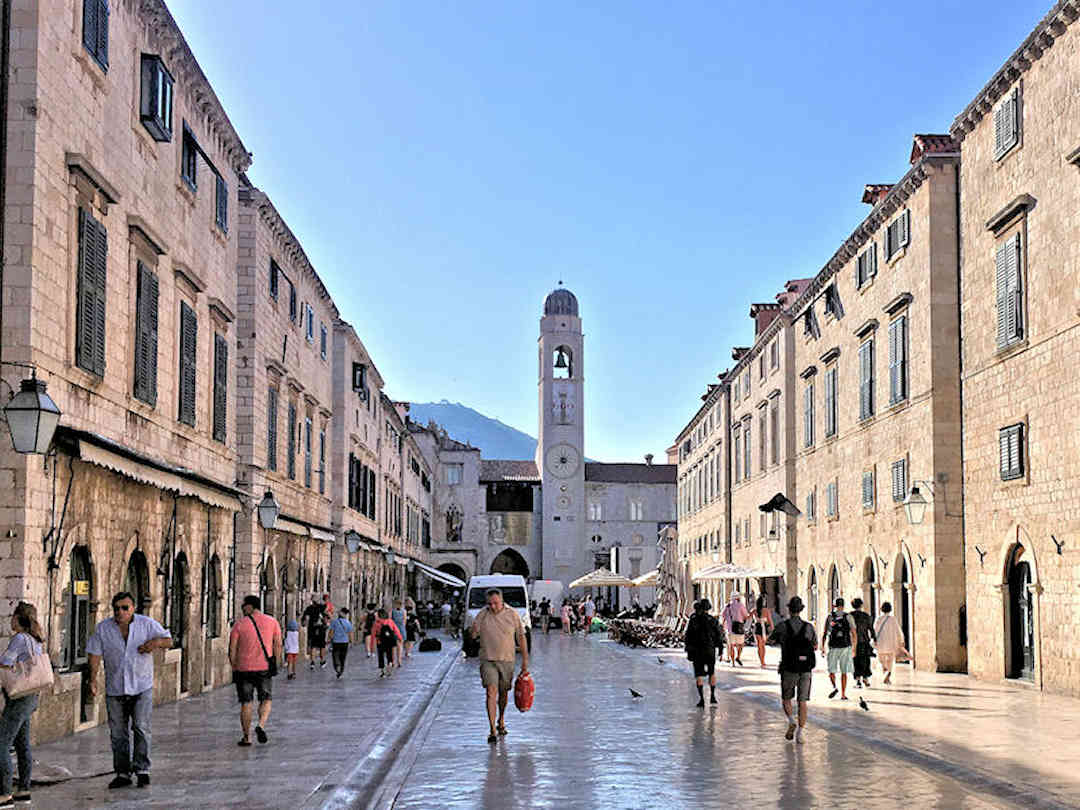
Catch a glimpse of the old Dubrovnik in the early morning or late afternoon and evening
We entered through Pile Gate [Google Maps location] at approximately 0730h. While there were already a few tourists, we also saw heaps of locals going about their business: buying groceries at the market, runners on their morning jog, produce being delivered to restaurants, rubbish being collected, and a fishing boat being refurbished in the old harbour.
By the time we left the Old Town (about 1115h), the place was packed with people, thanks to three cruise ships anchored that day.
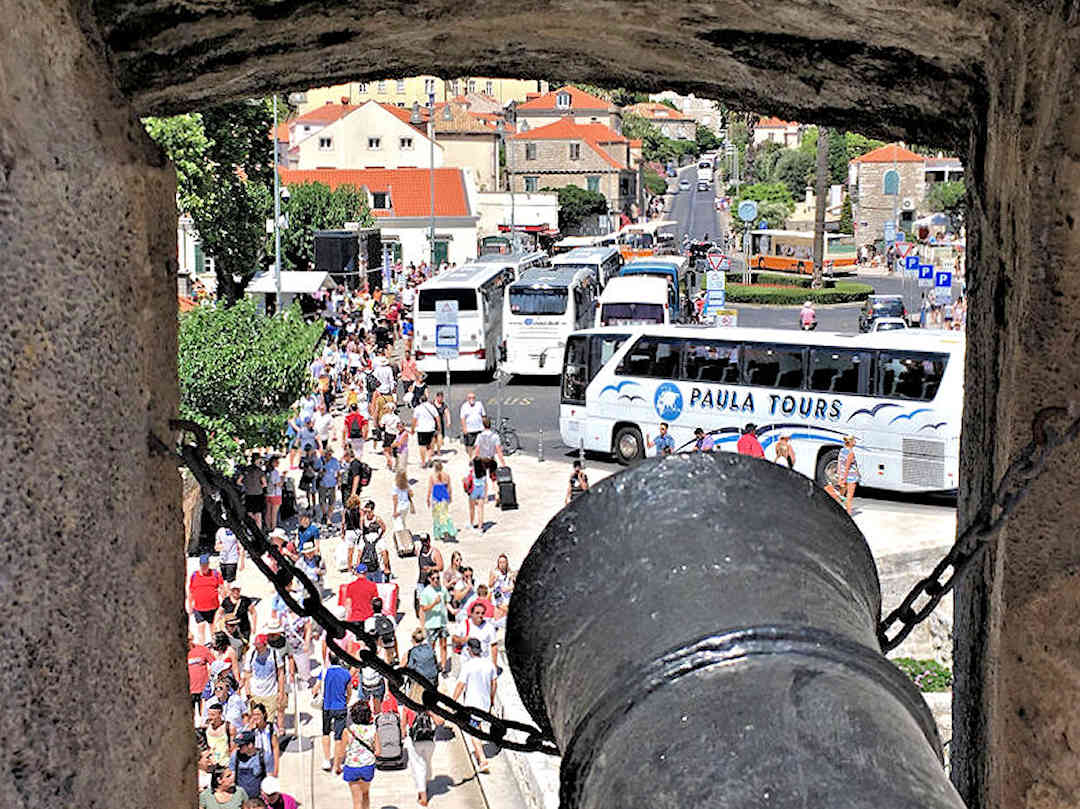
When the day visitors arrive the queuing and pushing begins
#2 – Stay longer
Apart from cruise ship tourists, day visitors to Dubrovnik come from as far away as Kotor and Budva in Montenegro and Mostar in Bosnia and Herzegovina. While geographically close, thanks to border crossings, you only have a few hours (in the middle of the day when it’s busiest and hottest) to explore Dubrovnik.
Do yourself the favour and stay for a few nights. Dubrovnik is expensive, we know. But a bit further out, in Lapad or even Cavtat (both are well connected by public bus and ferry), prices are a little more affordable.
Where to stay in Dubrovnik
We know some of you would like to stay within the city walls. So let’s talk about that first. A place we’ve come across and liked the look of is Studio Apartment Lumia. Be aware that there is no car access in the Old Town. So, if you’re planning to rent a car to explore other places (in Croatia, Montenegro or Bosnia and Herzegovina) do so when you leave Dubrovnik.
If the Old Town is out of your price range or you’d like somewhere quieter and/or closer to the beach, we recommend staying outside the city walls.
The suburbs of Pile (near the Western Gate) and Ploče (near the Eastern gate and up the side of Mt Srd, the mountain behind Dubrovnik) are within walking distance from the Old Town. Many places here enjoy gorgeous views over the fortified city and the sea, like Apartments Lazarin. You do need to be fairly mobile though as many places require you to climb stairs.
The second nearest option is the Lapad Peninsula, 3-4 kilometre northwest of the Old Town and well-connected by bus. Apartment Goge has everything you need and is in a nice area.
A bit further away yet within easy reach of the Old Town by bus and ferry, are the villages along the south coast – all the way to and including Cavtat. Apartments Orange Tree would have been our choice here.
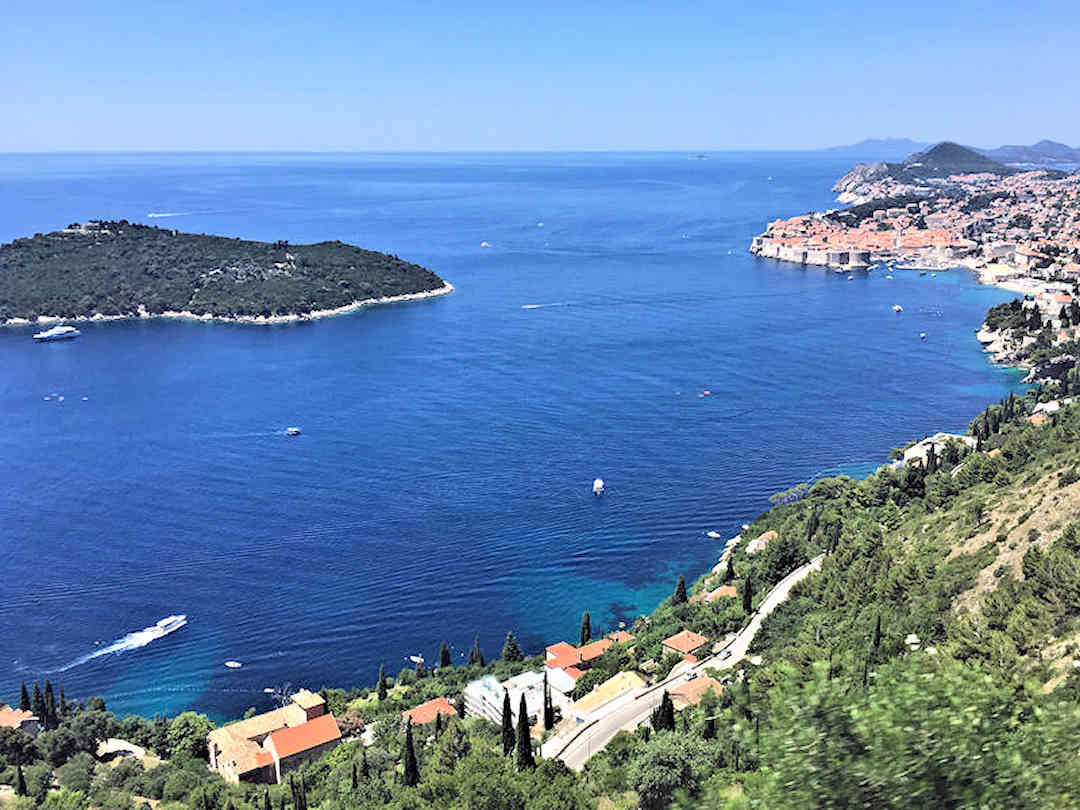
Stay a few nights near Dubrovnik - Cavtat and Lapad are well connected to the Old Town
# 3 – Venture off the beaten path
\Walking the city walls is expensive. The city increases the entry fees every year, yet still, the walls are choking with people, even in the middle of a searingly hot day. Why would you do this to yourself?
There are beautiful viewpoints over the Old Town that won’t cost you a cent. And you don’t need to push past your selfie stick or umbrella-wielding neighbour to be able to take a photo.
You can even walk the city walls if you must. The Foundry Museum, an interesting archaeological museum underneath the Minčeta Tower, allows you to walk along the lower fortifications and on top of Pile Gate – without the tourist crowds.
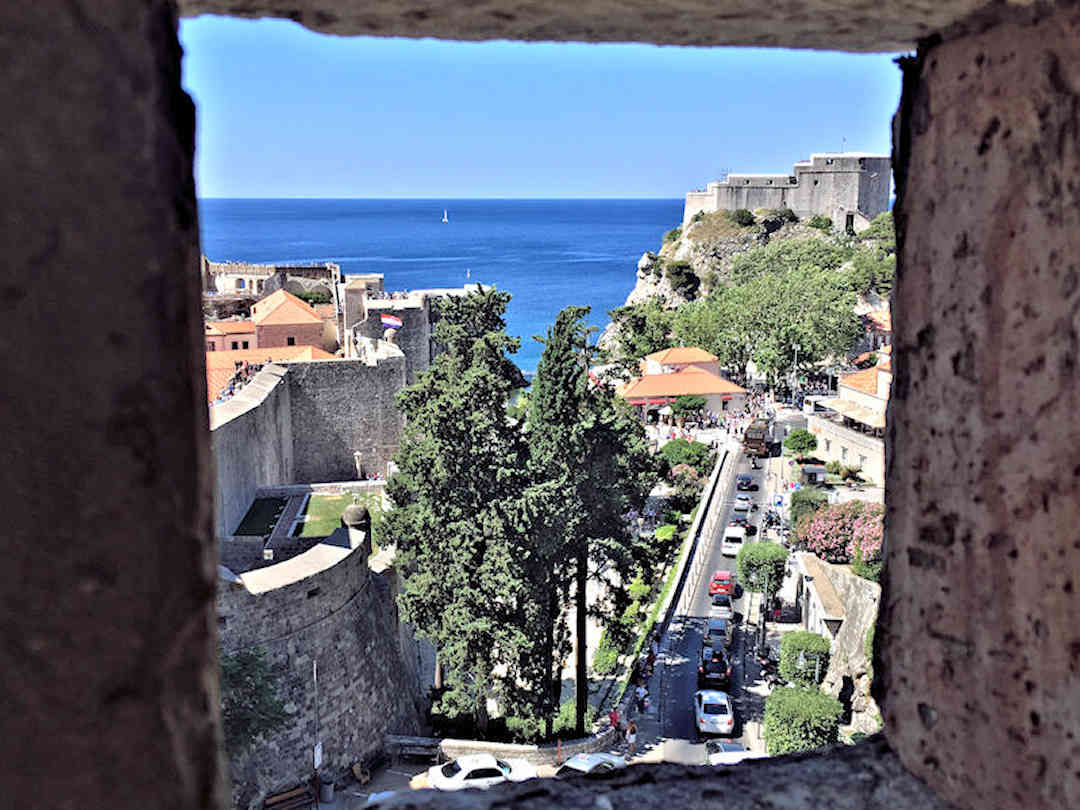
Visiting the Foundry Museum underneath the Minčeta Tower, allows you to walk along the lower fortifications and on top of Pile Gate
Want to find those alternative Instagram-able locations?
You don’t need to walk the city walls to enjoy gorgeous views over Dubrovnik’s Old Town. We share seven awesome spots that barely cost you a cent.
If you venture off the beaten tourist path in the Old Town, you will not only see well-preserved palaces and churches but also ruins of houses, still waiting to be restored to their former glory. These are reminders that Dubrovnik was under siege not too long ago and that the UNESCO listing did not stop the shelling of the Old Town.
We recommend checking out War Photo Ltd [Google Maps location], where photos tell the story of the Croatian War of Independence and its impact on Dubrovnik. The Homeland War Museum near the cable car station on top of Mt Srd also provides a lot of information about this part of Dubrovnik’s more recent history. It’s worthwhile checking if you’re visiting Mt Srd.
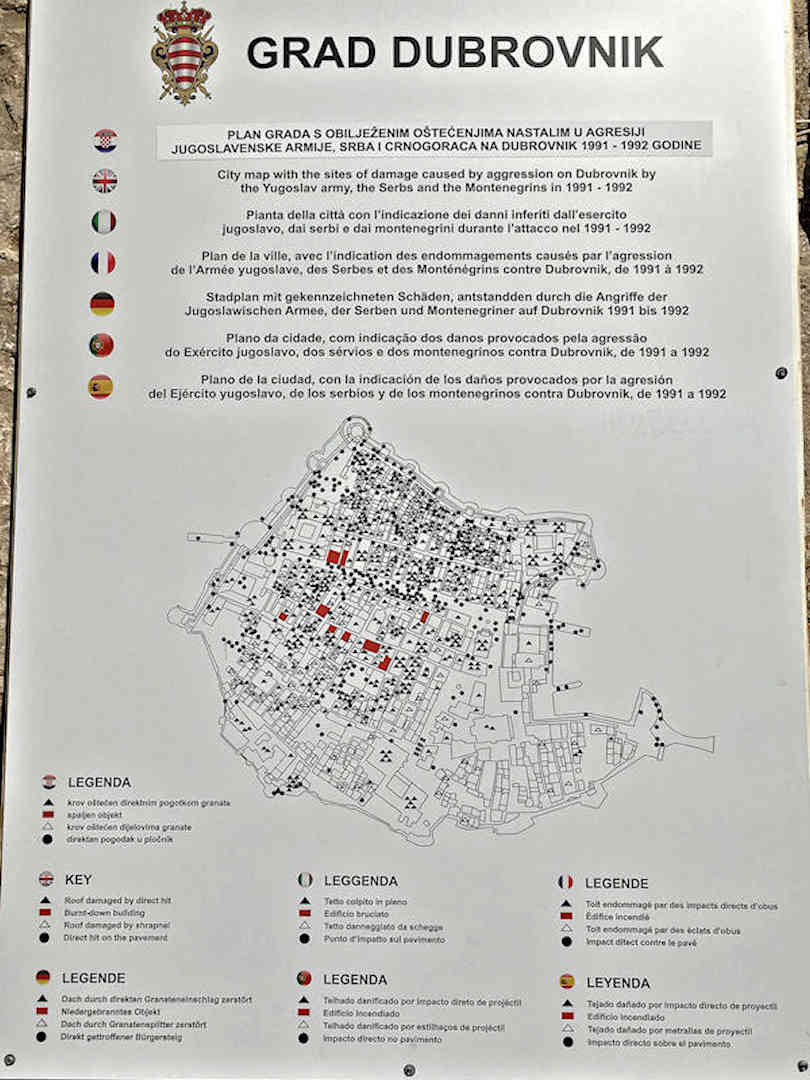
Despite its UNESCO listing, the Old Town was severely damaged during the Croatian War of Independence
To get away from the crowded streets of the Old Town, why not take to the water? Kayaking from Kolorina Beach looked like a lot of fun. Check out the beaches in Lapad, easily reached by public bus, or along the south coast. Or join a day tour and explore the islands off the coast.
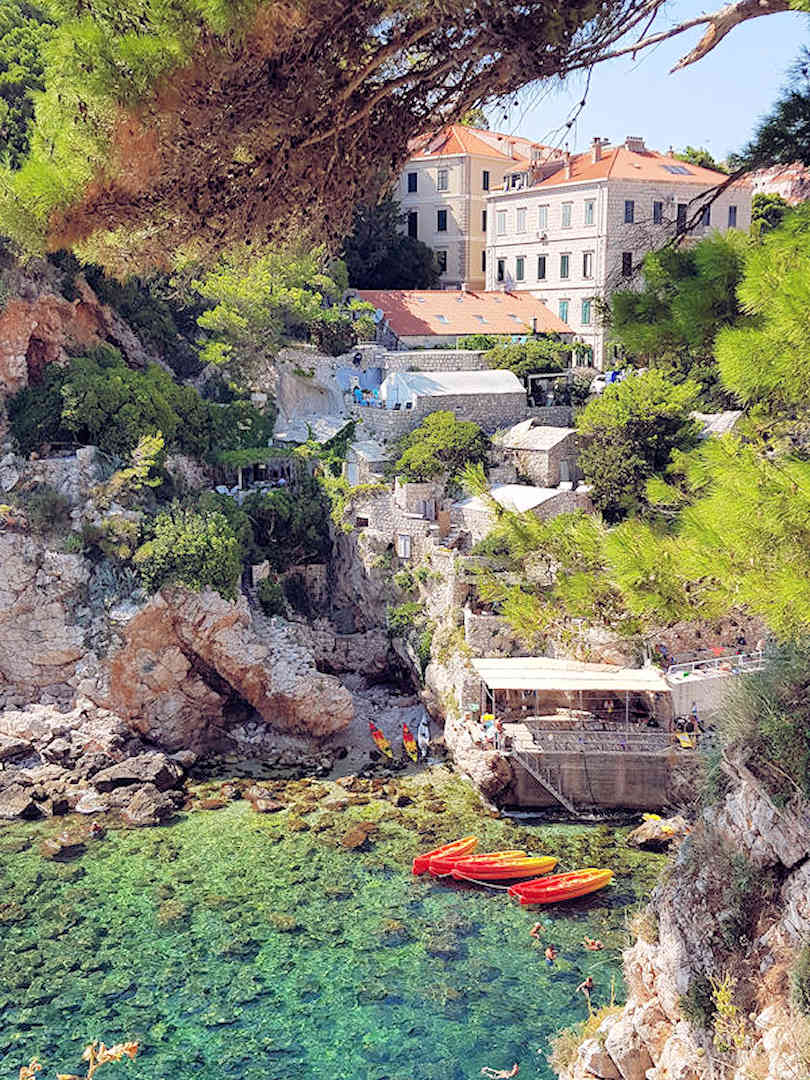
Try kayaking at Kolorina Beach or head to the offshore islands for the day | Photo by Cat Bassano on Unsplash
If you’re after a different, more immersive experience there are a number of food tours and cooking classes offered in and around Dubrovnik. You’ll learn more about the history of the region, get to taste traditional Dalmatian food and support local family businesses.
#4 – Show respect
Okay, this point has less to do with avoiding tourist crowds and more to do with not upsetting locals. And therefore, it’s an important one.
When we visited Dubrovnik, a bunch of twenty-something Spaniards pulled their shirts off on the historic Jesuit steps and swung them overhead, encouraged by the whistles and chanting of their friends.
These steps (and many other places around the Old Town) may invite Game of Thrones fans to go bananas, but please, respect this historic place, its inhabitants (and fellow visitors).
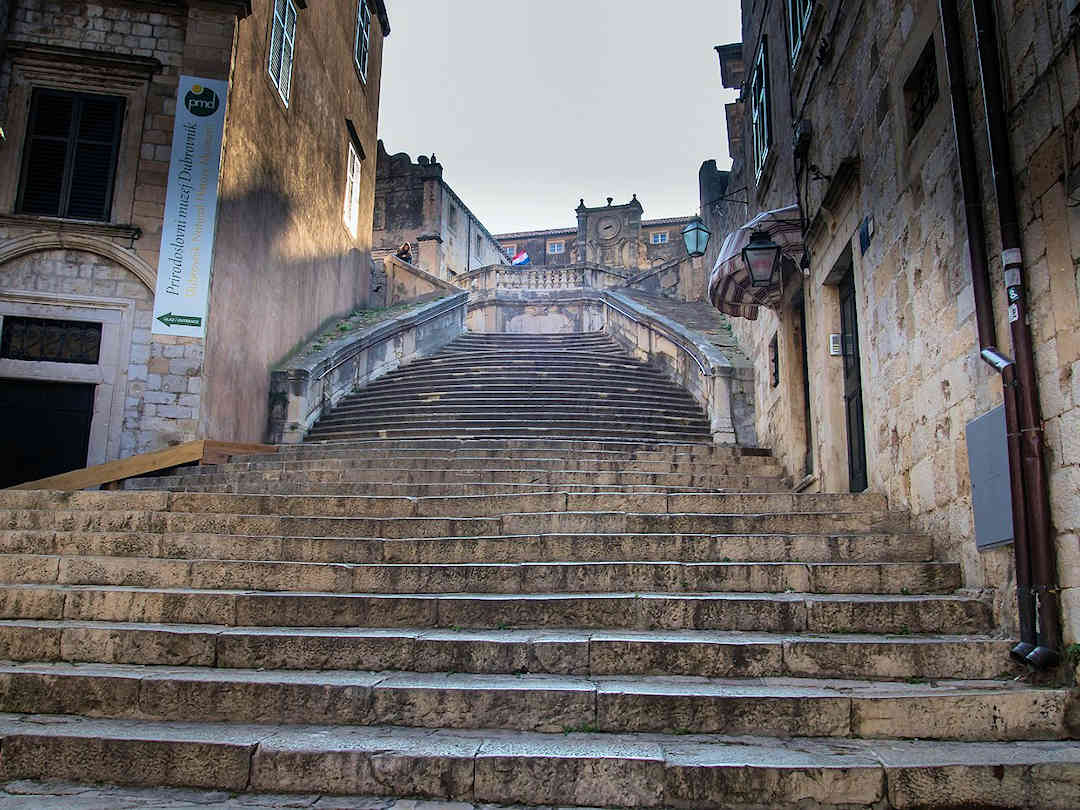
Not only a Game of Thrones location: Be respectful of this historic place and its inhabitants | Image courtesy of MzPhotos on Pixabay
#5 – Don’t visit
It might seem like a radical idea, but as mentioned at the beginning, we seriously thought about whether we should visit at all. We came here at the end of June (theoretically before the peak season), but accommodation prices were already ridiculous.
Having travelled along the Dalmatian coast before we arrived in Dubrovnik, we have visited other gorgeous, less crowded and more affordable alternatives to Dubrovnik. But do you want to see Game of Thrones locations? Well, one of these cities featured in Game of Thrones too.
What would you do to act as a sustainable tourist in Dubrovnik?
Would you alter your behaviour to limit the negative impact your visit could have on a destination like Dubrovnik? What are your thoughts?

